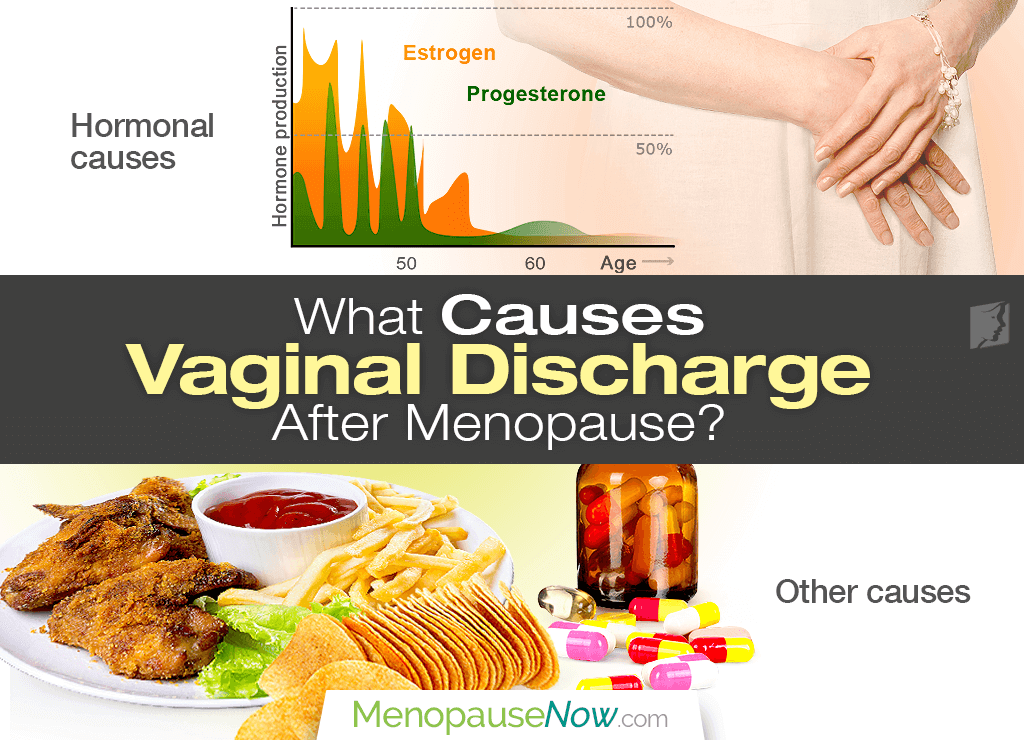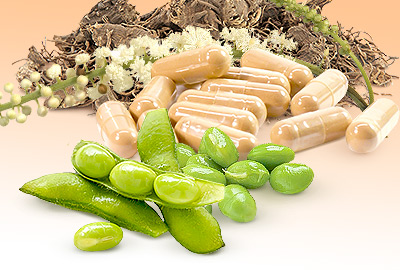Vaginal discharge, especially with abnormal qualities or in irregular quantities, might cause a woman to become alarmed. Though vaginal discharge after menopause could be a sign of a serious issue, it's more likely that it is being caused by something less malignant.
Learn more about postmenopausal vaginal discharge before deciding what route of treatment is best for you.
What Causes Vaginal Discharge After Menopause?
Hormonal causes
In postmenopause, or the years after menopause, women's estrogen levels settle at an all-time low as ovarian hormone production ends. This can lead to a loss of elasticity and lubrication, and the resulting vaginal dryness.
Just as vaginal discharge has been a normal part of a woman's menstrual cycle during the childbearing years, she will continue producing it once she transitions out of her fertile years. However, the amounts are usually smaller than before menopause.1
In addition, lack of vaginal lubrication can disrupt the vaginal pH level, making it more susceptible to bacterial and yeast infections.
These infections are commonly recognized by a watery, irritating, and foul-smelling discharge, or by a yellow discharge with a “fishy” smell. As such, they require proper treatment.
Other causes
Other factors can increase the risk of infection or generate abnormal discharge after menopause, including:
- Poor personal hygiene
- Synthetic underwear
- Medications
- Poor diet
In uncommon scenarios, yellow-brown discharge after menopause could be a symptom of amore serious condition, such as sexually transmitted diseases (STDs), endometrial hyperplasia, orcertain types of cancer. If it doesn't clear up soon or is accompanied by pain, go to your gynecologist.
Coping with Vaginal Discharge After Menopause
Because most cases of vaginal discharge are caused by decreased estrogen levels, which may lead to infections, it is possible to improve your vaginal health as well as to prevent recurrent vaginal infections by following these tips:
Eat plenty of phytoestrogenic foods. In order to replace lost estrogen, stock up on soybeans, tofu, hummus, berries, apples, carrots, lentils, and flaxseed, among others.
Use water-based creams containing estrogen. These creams are known to help maintain proper lubrication after menopause. Consult your doctor for the best option for you.
Shower post-workout. After vigorous exercise, shower as soon as you are able to since sweat under synthetic fabrics can create an environment for possible infections.
Try to enhance blood circulation. Taking part in sexual intercourse and doing Kegel exercises enhance blood circulation in the vaginal area and stimulate natural moisture secretion.
Wear cotton underwear. This will improve air circulation around the vagina, which provides a less ideal environment for bacteria to grow than synthetic fabrics.
Treatment Options
Overcoming vaginal discharge after menopause starts by treating vaginal dryness through hormonal balance in most cases. Click on the following link to learn about natural and effective vaginal dryness treatments to go back to having a healthy vaginal flora that does not affect your day-to-day life.
Sources
- Health Direct. (2017). Vaginal discharge. Retrieved February 20, 2019, from https://www.healthdirect.gov.au/vaginal-discharge
- The North American Menopause Society. (n.d.). Changes in the Vagina and Vulva. Retrieved February 20, 2019, from https://www.menopause.org/for-women/sexual-health-menopause-online/changes-at-midlife/changes-in-the-vagina-and-vulva
Footnotes:
- Harvard Medical School. (2016). Vaginal Discharge, Itching or Irritation. Retrieved January 15, 2020 from https://www.health.harvard.edu/decision_guide/vaginal-discharge-itching-or-irritation



